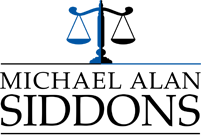Get Out of and Stay Out of Debt
Whether you are struggling with a mountain of debt or a more reasonable amount, your main financial goal is to get out of that debt, and then stay debt-free. One of the best ways to achieve this goal is through budgeting, and while it may sound obvious, there are key ways to budgeting your way out of debt that are often misunderstood. Let’s take a closer look at this basic method of debt consolidation.
Looking at your monthly budget, you should devote as much of your surplus income after expenses as possible to lessening your debt load. Once you know how much you should regularly be able to set aside, after your expenses and your income are sorted, you will be able to find a repayment plan that works best for you.
Align the schedule and interest rates towards lessening your total payments as efficiently as possible, and you will have a great plan that should work towards securing your financial future in a smooth manner.
While the above may seem self-explanatory, too often we simply expect to understand the best rate to pay back our debt without fully calculating what we have to spend. Rounding up or down can make a huge impact on the total amount of time it takes to pay back your debt, and without looking at the numbers you may underestimate exactly how much you would spend on coffee if unchecked.
You could very easily end up having less towards your loans than you would have hoped without knowing exactly where it all went. Though you have the best of intentions, your plan will go awry if not carefully planned and executed.
Example Household Budget
Here’s an example of one typical type of budget. For someone who takes in $3,000 monthly, they might have to pay $1,000 in their mortgage, and then several hundreds more on utilities.
This goes beyond the expected power, gas, and water, and also covers the new essentials of internet, phone and TV, as well. Other expenses that you make every month, like food, gasoline or tolls, or costs for your children’s activities or education should also be considered as recurring and non-negotiable.
Say then that after those expenses, you have $600 left over that you make each month which can be spent as you choose. It’s generally a good idea to set aside some percentage towards emergencies that you don’t plan for, like an illness, or a car or home maintenance project. However much you choose to set aside—let’s say $200—you should invest into paying off your debt.
If you are able to consolidate your debt into one monthly ($400) payment, you should be on a great track. If what you have left over after expenses isn’t sufficient with that plan, you can look at where in your expenses you may be able to cut back and free up more for your debt repayment. Tightening the belt in this area will help you far into the future.
For more information on debt consolidation, or on finding out if bankruptcy may be a smart option, call the Law Offices of Michael Alan Siddons today for a free consultation. We can be reached at 610-255-7500 and look forward to speaking with you soon.











